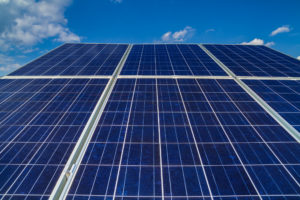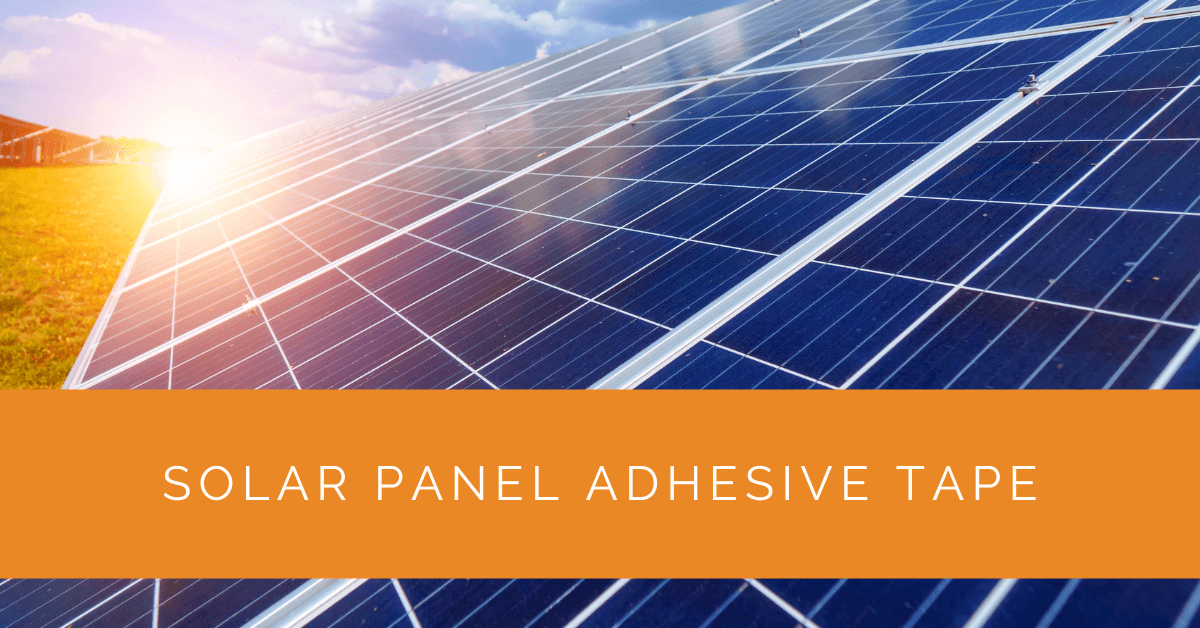Conventional methods involving brackets, screws, and racking systems have long been the norm in solar panel installation. However, an emerging alternative offers simplicity, flexibility, and durability: adhesive tape. This article will delve into solar panel adhesive tape, exploring its benefits, considerations, and installation process.
Contents
- 1 Key Takeaways
- 2 The Role of Adhesive Tape in Solar Panel Mounting
- 3 Types of Adhesive Tape for Solar Panel Installation
- 4 Surface Preparation for Adhesive Tape Installation
- 5 Testing and Ensuring Proper Adhesive Tape Bonding
- 6 DIY Installation with Adhesive Tape
- 7 Case Study: Implementing Solar Panel Adhesive Tape for Residential Installation
- 8 Expert Insights From Our Solar Panel Installers About Solar Panel Adhesive Tape
- 9 Experience Solar Excellence with Us!
- 10 Conclusion
- 11 FAQ
Key Takeaways
- Adhesive tape provides a versatile and durable alternative to traditional mounting methods for solar panels.
- VHB tape, in particular, offers high-strength adhesion and flexibility, making it a popular choice for solar panel installation.
- Proper surface preparation, testing, and adherence to manufacturer guidelines are crucial for successful adhesive tape bonding and long-term performance.
The Role of Adhesive Tape in Solar Panel Mounting
Traditional Mounting Methods
Traditional solar panel mounting methods involve brackets, screws, and racking systems. These methods provide stability and security but require additional hardware and complex installations and may damage the roof or the solar panels themselves.
Introducing Adhesive Tape
Adhesive tape offers an innovative and versatile alternative for solar panel mounting. Specifically, VHB (Very High Bond) tape has gained popularity due to its high strength and long-lasting adhesion. VHB tape is an industrial-grade adhesive tape developed by 3M, designed to create a strong bond between surfaces.
Types of Adhesive Tape for Solar Panel Installation
VHB (Very High Bond) Tape
VHB tape is preferred for solar panel installation due to its exceptional bonding properties. Its flexible nature allows it to conform to various surfaces, including both smooth and irregular ones. With high-strength adhesive, VHB tape ensures a durable bond that can withstand various weather conditions.
Other Adhesive Tape Options
While VHB tape is widely used in the industry, other adhesive tape options are available for solar panel installation. These options include foam and double-sided tape, each with its characteristics and applications. Foam tape, for example, provides additional cushioning and vibration-dampening properties.
Surface Preparation for Adhesive Tape Installation
Importance of Surface Prep
Surface preparation is a crucial step in ensuring the effectiveness of adhesive tape bonding. Proper surface prep helps to maximize adhesion strength and durability. It involves cleaning the surface, removing contaminants, and sometimes applying primers or adhesion promoters.
Surface Cleaning and Treatment
To prepare the surface, thoroughly clean it using a mild detergent or a specialized cleaner recommended by the tape manufacturer. Remove any dust, dirt, grease, or other particles hindering the tape’s adhesion. After cleaning, consider using a primer or adhesion promoter to enhance the bond between the tape and the surface.

Testing and Ensuring Proper Adhesive Tape Bonding
Conducting Adhesion Tests
To ensure a strong and reliable bond, it is essential to conduct adhesion tests before fully relying on the adhesive tape. These tests involve applying the tape to a sample surface, allowing it to bond, and subjecting it to various stress tests. The tests can include checking for peel strength, shear strength, and resistance to environmental factors.
Monitoring and Maintenance
Regular monitoring and maintenance are necessary to ensure the continued performance of the adhesive tape. Periodic visual inspections can help detect any signs of deterioration or damage. Additionally, following the manufacturer’s guidelines for cleaning and maintenance can prolong the tape’s lifespan and optimize its adhesive properties.
DIY Installation with Adhesive Tape
DIY Considerations
Adhesive tape offers an attractive solution for DIY enthusiasts looking to install solar panels themselves. The simplicity of the installation process, combined with the flexibility of the tape, makes it accessible to those without professional experience. However, it is crucial to consider the load-bearing capacity, the surface type, and any specific requirements of the solar panel manufacturer.
Step-by-Step Installation Guide
When installing solar panels using adhesive tape, the following steps should be followed:
- Surface Preparation: Clean the mounting surface thoroughly, ensuring it is free from dust, dirt, and grease
- Tape Application: Cut the adhesive tape into appropriate lengths, considering the size and weight of the solar panels. Apply the tape to the back of the solar panel, ensuring even coverage and sufficient contact with the surface.
- Positioning and Pressing: Carefully position the solar panel on the desired mounting location. Apply firm and even pressure to bond the tape and the surface properly. Take into account any specific instructions provided by the tape manufacturer.
- Bonding Time: Allow sufficient time for the adhesive tape to bond with the surface. Follow the manufacturer’s guidelines for the recommended bonding time. This ensures that the tape forms a strong and durable bond.
- Testing and Verification: Once the bonding time has elapsed, conduct thorough tests to verify the strength and durability of the adhesive tape. Perform tests such as applying pressure, simulating environmental conditions, and checking for any signs of peeling or weakening.
It is important to note that while adhesive tape provides a viable option for solar panel installation, it is essential to consult with professionals or follow the manufacturer’s recommendations to ensure the proper selection and application of the tape.
Case Study: Implementing Solar Panel Adhesive Tape for Residential Installation
Background
At Solar Panels Network USA, we continuously seek innovative solutions to enhance the efficiency and sustainability of solar panel installations. One of our recent projects involved the use of adhesive tape for mounting solar panels on a residential property. This approach aimed to streamline the installation process, reduce labor costs, and minimize potential damage to the roof structure.
Project Overview
A homeowner in a suburban neighborhood sought an eco-friendly solution to power their home. Traditional mounting methods posed concerns about roof integrity and aesthetic impact. The homeowner was interested in a less invasive installation method that would maintain the roof’s appearance while providing reliable solar energy.
Implementation
Initial Assessment and Planning
We conducted a thorough assessment of the roof structure, taking into account the type of roofing material, surface condition, and solar panel layout. Based on this assessment, we selected Very High Bond (VHB) tape due to its proven strength and flexibility.
Surface Preparation
Proper surface preparation was critical for ensuring the adhesive tape’s effectiveness. The roof surface was meticulously cleaned to remove dust, dirt, and grease. A primer recommended by the tape manufacturer was applied to enhance the bond.
Tape Application and Panel Mounting
The VHB tape was cut into appropriate lengths to match the solar panel dimensions. We carefully applied the tape to the back of each panel, ensuring even coverage. The panels were then positioned on the roof, and firm pressure was applied to secure the bond. The process was repeated for all panels, ensuring alignment and proper spacing.
Testing and Verification
After the recommended bonding time, we conducted a series of tests to verify the adhesive tape’s strength. This included applying additional pressure to simulate wind loads and checking for any signs of peeling or weakening. The system passed all tests, confirming the tape’s reliability.
Results
The use of adhesive tape for this residential solar panel installation resulted in several key benefits:
- Reduced Installation Time: The project was completed more quickly compared to traditional methods, significantly reducing labor costs.
- Minimized Roof Damage: The adhesive tape method eliminated the need for drilling holes, preserving the roof’s integrity and appearance.
- Strong and Durable Bond: The VHB tape provided a robust and long-lasting bond, ensuring the panels remained securely attached under various weather conditions.
- Enhanced Aesthetics: The absence of visible brackets and screws contributed to a cleaner, more aesthetically pleasing installation.
Summary
This case study highlights the successful application of solar panel adhesive tape in a residential setting. By choosing VHB tape, we achieved a faster, cleaner, and less invasive installation process while maintaining the strength and durability required for long-term performance. This innovative approach demonstrates the potential of adhesive tape as a viable alternative to traditional mounting methods, offering numerous benefits for homeowners and installers alike.
Expert Insights From Our Solar Panel Installers About Solar Panel Adhesive Tape
Solar panel adhesive tape is a revolutionary solution that simplifies the installation process. It provides strong, durable bonds while reducing the need for invasive hardware. This method is particularly beneficial for preserving roof integrity.
Senior Solar Installation Engineer
Choosing the right type of adhesive tape, such as VHB tape, is crucial for ensuring long-term durability and performance. Proper surface preparation and adherence to manufacturer guidelines are essential for successful installations.
Lead Solar Technician
Adhesive tape allows for a faster and cleaner installation process. It’s a great option for DIY enthusiasts and professional installers, providing flexibility and efficiency without compromising on strength.
Solar Systems Specialist
Experience Solar Excellence with Us!
Trust in Solar Panels Network USA, where our seasoned experts deliver top-quality solar solutions for homes and businesses nationwide. With a legacy of countless successful installations and a commitment to sustainable energy, we’re your reliable partner in the solar journey. Ready for a brighter, eco-friendly future? Call us now at (855) 427-0058 and harness the power of the sun!
Conclusion
Solar panel adhesive tape offers a convenient and reliable alternative to traditional mounting methods. With its high-strength adhesion and flexibility, adhesive tape provides a durable bond for solar panels, eliminating the need for brackets, screws, and racking systems. For DIY enthusiasts or professional installers, adhesive tape streamlines the installation process while minimizing the risk of damage to surfaces and solar panels.
However, it is crucial to ensure proper surface preparation, select the right adhesive tape for the specific application, and conduct thorough testing to ensure its effectiveness and longevity. By embracing adhesive tape as a mounting solution, we can simplify solar panel installation, increase installation efficiency, and contribute to the growth of sustainable energy.
FAQ
What is solar tape?
Solar tape, also known as adhesive tape or mounting tape, is a type of tape specifically designed for solar panel installation. It offers a convenient and alternative method to traditional mounting systems, providing strong adhesion between the solar panels and the mounting surface.
What is the best adhesive for solar panels?
The best adhesive for solar panels depends on various factors, such as the type of surface, environmental conditions, and specific requirements of the solar panel manufacturer. Very High Bond (VHB) tape is commonly used and highly recommended due to its exceptional bonding strength and durability.
What is the strongest adhesive for solar panels?
The strongest adhesive for solar panels is typically Very High Bond (VHB) tape. VHB tape is an industrial-grade adhesive tape known for its exceptional bonding strength, resistance to environmental factors, and long-lasting adhesion. It provides a reliable and durable bond between the solar panels and the mounting surface.
About the Author
Solar Panels Network USA stands at the forefront of solar energy solutions, driven by a team of seasoned solar engineers and energy consultants. With over decades of experience in delivering high-quality solar installations and maintenance, we are committed to promoting sustainable energy through customer-centric, tailored solutions. Our articles reflect this commitment, crafted collaboratively by experts to provide accurate, up-to-date insights into solar technology, ensuring our readers are well-informed and empowered in their solar energy decisions.

